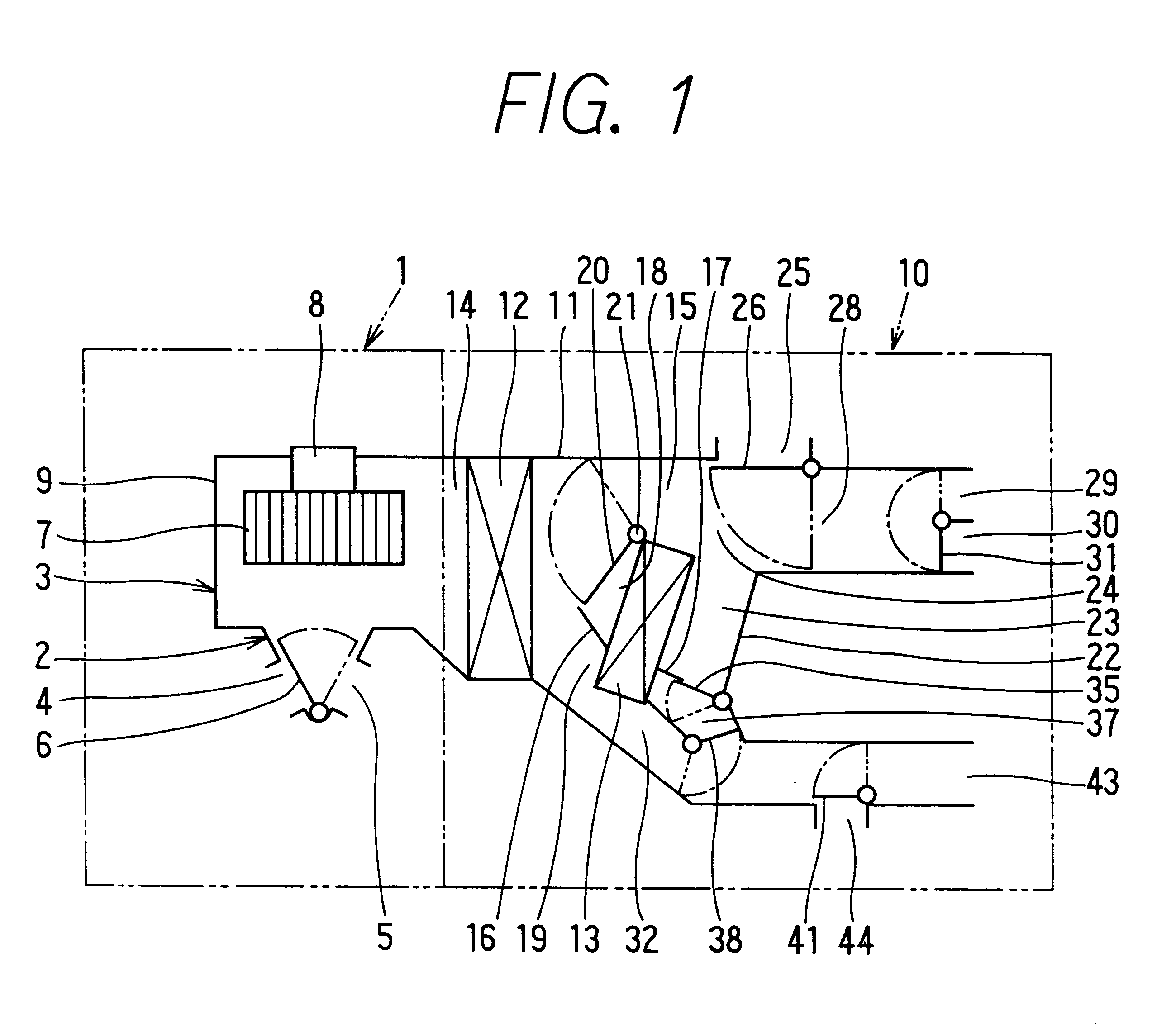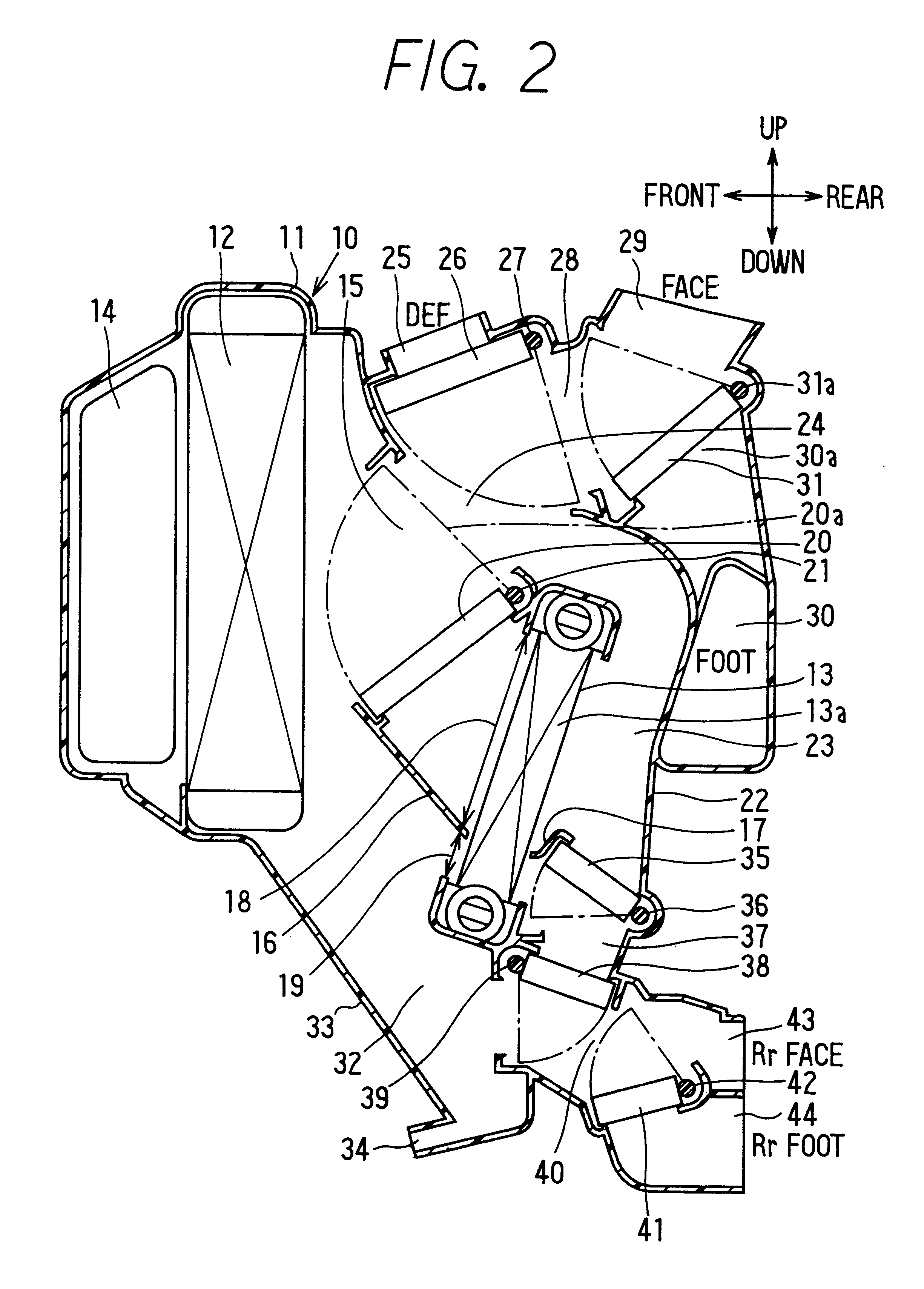Air conditioning apparatus for vehicle
a technology for air conditioning apparatus and passenger compartment, which is applied in the direction of vehicle maintenance, vehicle cleaning, transportation and packaging, etc., can solve the problem that the heating capacity of the front seat of the passenger compartment cannot be sufficiently effective improved
- Summary
- Abstract
- Description
- Claims
- Application Information
AI Technical Summary
Benefits of technology
Problems solved by technology
Method used
Image
Examples
Embodiment Construction
Preferred embodiments of the present invention will be described hereinafter with reference to the accompanying drawings.
A first preferred embodiment of the present invention will be now described with reference to FIGS. 1-3. As shown in FIG. 1, an air conditioning apparatus for a vehicle includes a blower unit 1 and an air conditioning unit 10. In the first embodiment, the air conditioning unit 10 is disposed at an approximate center in a vehicle right-left direction, under an instrument panel in a passenger compartment of the vehicle. The blower unit 1 is disposed at an offset position to be shifted from the air conditioning unit 10 toward a front passenger's side in the vehicle right-left direction, for example.
The blower unit 1 has an inside / outside air switching box 2 and a blower 3. The inside / outside air switching box 2 includes an outside air introduction port 4 for introducing outside air (i.e., air outside the passenger compartment) and an inside air introduction port 5 fo...
PUM
 Login to View More
Login to View More Abstract
Description
Claims
Application Information
 Login to View More
Login to View More - R&D
- Intellectual Property
- Life Sciences
- Materials
- Tech Scout
- Unparalleled Data Quality
- Higher Quality Content
- 60% Fewer Hallucinations
Browse by: Latest US Patents, China's latest patents, Technical Efficacy Thesaurus, Application Domain, Technology Topic, Popular Technical Reports.
© 2025 PatSnap. All rights reserved.Legal|Privacy policy|Modern Slavery Act Transparency Statement|Sitemap|About US| Contact US: help@patsnap.com



